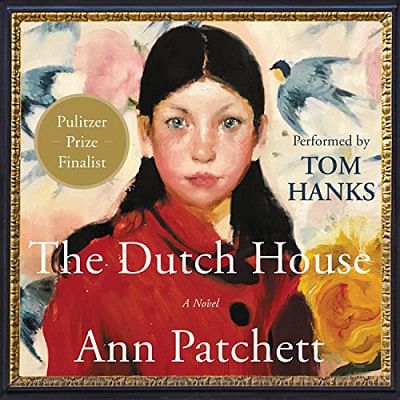Ann Patchett’s ‘The Dutch House’: On branches of memories and pain

Even though we moved out of our grandmother's house in Dhaka more than a decade ago, my sister and I still associate the word "storm" with the smell of the unripe mangoes that the kalboishakhi would force down from the trees in her backyard. There are many other quirks we share, things that might seem insignificant to someone who was not a part of our lives back then. But to us, the house with its long corridors and leafy backyard, and a front yard that turned into a badminton court each winter, is nothing short of a wonderland, a place that nurtured us even as it introduced us to the harsher realities of life, a place that remains a living, breathing character in the many dreams and nightmares that we have.
In Ann Patchett's The Dutch House (Harper, 2019), the lives of siblings Maeve and Danny Conroy are nowhere near as smooth as those of ours, but what resonated with me was the constant presence of the titular house—and its past—in the background of their lives. Bought by Maeve and Danny's father, the spacious, beautifully designed Dutch House changes the lives of each of its inhabitants, one event leading to another. For reasons that unfold over the course of the novel, the house had pushed the children's mother out of the house when Danny was little. In her absence, and left with a distant father, the young, diabetic Maeve, putting aside her own need for parental affection, takes on the role of a parent to her younger brother. She is helped by their two workers, Sandy and Jocelyn.
Just when their lives start assuming some form of normalcy, in comes Andrea, whose frequent visits to the Dutch House are soon followed by her marriage to Maeve and Danny's father. Andrea never grows fond of the two siblings and while the feeling is mutual, her entry into their lives changes everything for the worse, and following their father's untimely death, they are, in plain words, kicked out of the house.
Even though life goes on, the Dutch House endures as the place that shaped their lives; a house that, upon being purchased by their father, caused a domino effect that changed the course of their lives forever. Over the years, Maeve and Danny keep returning to the place, parking across the street from the house, never going in, recounting everything that happened in that house, good and bad, beautiful and ugly, and just like the house and its bygone days, the past and the present come together to gradually reveal little details that help them understand their lives a little better.
Even though Maeve and Danny are successful on the surface, their lives, as we witness over the course of the novel, were forever impacted by the traumas they once suffered. We are always told we should live in the present; indeed, it is generally advisable to do so. However, it is difficult to ignore the influence of the past. Memories and pain grow branches that, while unrecognisable, can be traced back to certain significant events. Having observed it in my own life and the lives of those around me, observing how the Conroy siblings go about their lives with their minds still connected to their history resonated strongly with me.
While reading The Dutch House, I was often reminded of the many fairytales I grew up reading and hearing. Familiar clichés are seen throughout the novel: an evil stepmother, the abandoned siblings taking care of each other, their small triumphs and even smaller revenges. The empathy and nuance with which Patchett tells the story gives freshness, however, to these clichés as old as time. The characters—both major and supporting—are complex and flawed, their actions often triggered by the many difficult things they have had to experience in their lives. People who Maeve and Danny thought they would never see again, people who left their lives after changing them in a way, return to clarify aspects of their history. These are flawed people who have made mistakes, but often had the justification of their individual perspectives. With her meticulous storytelling, Patchett takes familiar tropes and transforms them with compassion, giving us a beautiful story, introducing us to characters who in many ways resemble the people in our lives.
Shounak Reza is a contributor.

 For all latest news, follow The Daily Star's Google News channel.
For all latest news, follow The Daily Star's Google News channel. 



Comments